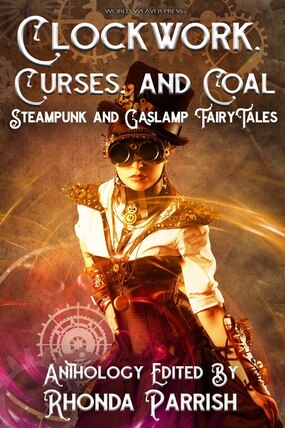 Guest Blog by Lex T. Lindsay Like so many children, I grew up on fairy tales. I had a thick book of kid-friendly classics like “Snow White and Rose Red” and “Cinderella.” I watched and loved movies about princesses finding their happily ever afters and wicked step-somethings eating their just desserts. From a young age, there was a level of escapism to these stories. I rarely had lasting and truly meaningful friendships as a child. I was (am) both fat and neurodivergent, two things that severely impacted my ability to form and maintain relationships. My school was small. We all grew up knowing our classmates’ names. We also grew up knowing every person’s alleged flaws. There was nowhere to hide, no sea to be lost in. From a young age, I was the butt of “she likes you” jokes, these declarations directed at students for whom I had no romantic inclinations. In their faces of disgust, I found myself being rejected—receiving “no”s to questions I never even asked. Later on, these jokes shifted into instances of being asked out for a laugh, the asker often doing it at the urging of a group of giggling peers. The message was clear. You are not worthy. In fact, you are so unworthy that the very idea of you having worth is hysterical. Picked last, left out, blown off, and passed over. For me, dreaming of my own prince was dreaming of a life where I was genuinely loved and valued. A life where all the things that once hurt me were, like a horrid pea beneath so many mattresses, nothing but a bad memory. The only problem is that no one in fairy tales looked like me. As I moved through childhood and was taught the perceived worth of bodies like mine—as I learned to be ashamed of how I looked in a swimsuit or a sleeveless shirt—my daydreams shifted. No longer was I simply dreaming of princes and forever loves. Instead, I dreamed about situations where, before I could be with the prince, I underwent a magical transformation that made me physically worthy of being loved at all. I imagined magic spells, sci-fi experiments, and witchy mentors telling me that my body wasn’t my final form after all. I didn’t really notice or examine this shift in thinking at the time, the way I wrote myself off even in my own stories. But I did it time and time again. As I grew older still, my personal relationship to fairy tales took another hit. I’m bisexual, and romantic fairy tales are some of society’s most heteronormative stories. Whether we’re talking Disney animations or holiday retellings on Lifetime or Hallmark, so many of these storylines hinge on concepts like love-at-first-sight (or even love-at-no-sight-at-all.) There is a pretty girl. There is a pretty boy. We all know where this is going before they even speak to each other. It’s a given that is almost never granted to same-sex characters (or fat ones). So what does it mean to retell a classic? It means getting the opportunity to remove the roof and walls of the story until all you’re left with is the framework. And even that can be changed. You can move the bathroom to the opposite end of the house. You can put a master bedroom where the living room used to be. You can use the empty spaces to make room for yourself. In “Sappho and Erinna,” I wrote a same-sex first meeting where the infatuation is instantaneous. I wrote a fat “princess” whose would-be lover never once questions her worth or how her body might impact it. Because it doesn’t impact it at all. In “Sappho and Erinna,” I found that little girl who dreamed and wished and wanted so desperately to be happy, and I gave her what she’d really wanted all along: a chance. The same chance as everyone else. Lex T. Lindsay likes cats, tats, and cool hats. When she isn't shaking words loose, she can often be found lurking in the woods. Find more of her work in Constraint 280 and in Glass and Gardens: Solarpunk Winters. Occasional Tweets @LexTLindsay.
0 Comments
 Guest Blog by Christina Ruth Johnson The Crystal Palace hovers in the background of "The Iron Revolution," but it was certainly at the forefront of everyone’s mind in Great Britain in 1851. And, like my story, it all started with a contest. Prince Albert wanted to create a temporary building to house the Great Exhibition of 1851, the first ever international show of manufactured goods. He advertised for designs from architects and ended up awarding the coveted contract to Joseph Paxton, known for designing greenhouses. His design for the exhibition was not only emblematic of the Industrial Age, it was also cost and time efficient. Over the course of only six months (unheard of at the time), Paxton’s team erected what came to be known as his “Crystal Palace” in the middle of Hyde Park. The only construction materials used were iron and an astounding amount of glass—the source of the nickname. Using prefabricated parts already available instead of bespoke ones cut costs considerably. Additionally, the recently invented telegraph saved time, allowing for rapid communication between London and the manufacturers. The end result did look like a giant greenhouse: a vast, barrel-vaulted hall that made copious room (about 990,000 square feet!) for everything from large machinery to full-grown trees to life-size models of dinosaurs. Over 100,000 objects went on display, representing nearly 14,000 exhibitors. Dogs and smoking were prohibited inside, as was alcohol. Instead, the organizers offered bottled soft drinks, filtered water, and free samples. For the first time ever, there were also public restrooms for men and women. Over six million people (a third of Britain’s population at the time) attended the exhibition. Other than on a battlefield, it was the first time that so many nations of the world had ever come together in one place. Looking at the various images of the Crystal Palace that we have today, I can only imagine the audience’s astonishment that such a structure was created by human hands. A paradox of magic and science. What better setting for a steampunk fairy tale? Sources, photos, and further reading https://www.royalparks.org.uk/whats-on/blog/the-great-exhibition-1851 http://www.crystalpalacemuseum.org.uk/ https://www.britannica.com/topic/Crystal-Palace-building-London https://www.vam.ac.uk/articles/building-the-museum#slideshow=12041177&slide=0 https://web.archive.org/web/20140814033429/http://www.vam.ac.uk/content/articles/w/watercolours-of-great-exhibition/ Read an account by Charlotte Bronte of her visit to the Great Exhibition: http://www.mytimemachine.co.uk/?p=74 Christina Ruth Johnson has her master’s degree in Art History and is currently working as a teacher, archaeologist, and freelance writer. Her work has previously appeared in Scheherezade’s Bequest and World Weaver Press’ Frozen Fairy Tales. She is honored and excited to share her story, "The Iron Revolution", in Rhonda Parrish’s Clockwork, Curses and Coal.
 Guest Blog by Diana Hurlburt When I made plans to move to New York’s Capital Region in 2018, I somehow forgot that I’d been to New York before--not to the Big Apple that stands in, for the rest of the country, as New York, but to western New York, outside Rochester: to the now-quiet heart of the Burned-over District and a town significant to my religion at that time. The Hill Cumorah Pageant is both outlier and central, a roadside oddity and an affirmation of belief. It was supposed to conclude in 2020, but the COVID19 pandemic has pushed the projected final showing to this year, so buy your tickets. For members of the Church of Jesus Christ of Latter-Day Saints raised in the so-called mission field, Palmyra and the Hill Cumorah feature as gems on the map of holy pilgrimage, stars linking the constellation of the Church’s expansion out of New York. There are other sites--the Kirtland Temple, Nauvoo, Winter Quarters, Salt Lake City--and each of them a historic site or reenactment to some degree, but the Hill Cumorah Pageant is the best display of light, color, magic, and ornate ceremony available to the average layperson. A church popularly perceived in contemporary times as staid, buttoned-up, chaste, and kind of boring holds, within its temples and singular scriptures, strange and beautiful architecture, art, stories, and rituals. When I was eleven or twelve and road-tripping with my family to see the Cumorah play, it seemed important to separate our church’s origins from its surrounding matrix. Joseph Smith’s vision was unlike those of the myriad other prophets, seers, spiritualists, and alchemists cropping up along the Erie Canal, because his came from God. From my post-Mormon adult perspective, the only thing separating the LDS Church from its origins is its continued presence. It’s now unimportant for me to locate the doctrines and practices in divine inspiration in order to give them impact and reality; the frequent challenges to the faith of my raising as a false one, following false prophets and worshiping a false Christ, ultimately spurred my interest in comparative religious studies, new religious movements, the exploration of how gods are born and which beliefs endure. I tried hard to situate the group depicted by “Divine Spark” in New York’s historic intersection of radical politics, otherworldly visions, and developing technology. The Erie Canal is credited in no small part with spreading the religious revivals of the Second Great Awakening west through New York into Ohio and beyond. Along with the Poughkeepsie Seer and the Era of Manifestations along the Hudson River came innovations in engineering and civic planning, as well as immigration and population booms. At the same time, abolition and suffrage were the topics on everyone’s lips; avid Quaker anti-slavery activists like Isaac and Amy Post were also spiritualists, while Sojourner Truth’s life prior to fame involved a Millerite sect. The Venn diagram of political and religious belief in the Burned-over District is mostly a circle, fluid and mingling. The Watchmaker’s people in my story mirror this tendency of constant motion, moving from the hills around Syracuse toward Rochester as slivers of metal are drawn to a magnet. Their group politics are abolitionist, pro-women, anti-marriage--as were many of the historic communes I drew on. They have their own set of holy writ, analogous to the golden plates Joseph Smith interpreted for his church. They are in some places welcomed for their craft and goods, as Shaker and Perfectionist sects were, and in others hounded and abused, as the early Mormons were driven from Ohio and Missouri. As I began turning over Mariah’s story in my head, the leap from the real-life strangeness of the Second Great Awakening to a cult based on mechanical construction and belief in a divine Watchmaker didn’t seem so drastic. Speculative fiction and religious tenets braid together in interesting ways, and what is fabulist fantasy to one is holy creed to another (not to mention, Orson Scott Card revamped the Hill Cumorah Pageant’s script in the 80s). As I began writing the story, my Mormon roots pushed up again and twined through the text in ways I hadn’t planned. The shattered crockery Mariah uses for her mechanical’s face, for instance, echoes the Mormon myth of church families’ glass and fine china ground into the stucco of the Kirtland Temple. Most of all, what rose in Mariah’s story was the lingering conviction that if no religion calls to you, you’re free to build one yourself… and to shape yourself in the image of those things you hold holy. Diana Hurlburt is a librarian in upstate New York. More of her short work can be explored at Memoir Mixtapes, Luna Station Quarterly, and Phoebe, and in the Sword & Kettle Press mini-chapbook series. When not remixing weird history and old stories, she writes romance, the newest of which is included in the anthology Second Chances. Find her on Twitter for iced coffee, heavy metal, and horses.
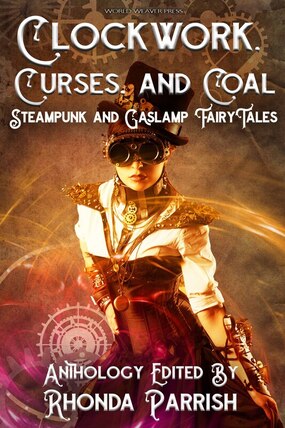 Guest Blog by Brian Trent In a steam-driven Victorian England, war is not fought with massed armies, but with duels between specialized combatants for the fate of a nation. This is the idea behind “Checkmate”, my contribution to Rhonda Parrish’s Clockwork, Curses and Coal. The game of chess has a history that seems a fairy tale in itself. Evidence suggests it emerged from the royal courts of India around 1,400 years ago and traveled along the Silk Road into Persia. As Islamic conquest absorbed the remnants of the Sassanid Empire, the popularity of chess exploded, and when worlds collided during the Crusades it continued its journey across battle-lines into Europe, where its pieces adopted the now-familiar shapes of rook and knight and pawn. It became the strategy game of the west, and has enjoyed an unending popularity as other board games of the past fell into obscurity. My father taught me chess when I was very young—I still recall the wonder evoked by handcrafted wooden chess pieces which had passed to him from his father. They suggested tales of wonder, and when I wasn’t learning the game’s rules I was creating adventures with the pieces… noble knights escorting queen and king into valleys of plastic dinosaurs to face an opposing army. (Alas, I never did formalize the rules of Dinosaur Chess.) And chess was further stoked in my imagination by the famous scenes in Through the Looking Glass, when Alice sees the little pieces come alive, and later interacts with such iconic personas as the Red Queen. Something about the concept of this "alternate war" seemed especially fitting for steampunk: the conceit of “civilized warfare for a civilized age,” as one of the characters observes. The main character is Edward Oakshott, a scandalous Byronic hero who finds himself fighting for London… a contest which will pit him against the terrifying, barely-human combatant known as the Rook. Of course, there’s a good deal else going on, but I won’t spoil anything for readers. Suffice to say that there are ample clockwork gadgets, curses of nightmarish technology, and coal-driven abominations to be found within. And chess, of course! Brian Trent writes science fiction and fantasy, horror and fable. His contribution here, “Checkmate”, is an original tale that draws folkloric inspiration from the chess game in Through the Looking Glass, as well as from the game of chess itself. Upon those checkered squares unfolds a unique story each time, with knights and queens, moving castles and the promise of success (or death) in every passing moment. Trent, an avid chess player himself, applies the strategic nature of the game and the specialized nature of its six “player classes” to a steampunk world that might have been. Trent’s recent publications can be found in Fantasy & Science Fiction (March/April 2020, July/August 2020, and September/October 2020), Baen Books’ Weird World War III anthology (October 2020), and more. His novel Ten Thousand Thunders was released last year from Flame Tree Press. You can catch up with Trent on his blog at www.briantrent.com.
 Guest Blog by Melissa Bobe Of all the fairy tale retellings I’ve entertained trying my hand at over the years, I really never thought I’d go for a Pied Piper reboot. I don’t have anything against that particular tale: music, justice, getting paid—what’s not to like? Still, it was a surprise when my writing mind turned to the Piper of Hamelin; when it comes to fairy tales, I tend to prefer Hans Christian Andersen and E. T. A. Hoffmann more than anything else. I drafted the first third of the story a few years back. The idea of rebellion viewed through the lens of a small, suffocating town as a kind of pestilence really resonated with me. (This was years before COVID-19, obviously, though that I sent Rhonda a story about plague during a pandemic isn’t lost on me). I was at work on my PhD in literature, studying transgenerational trauma in 20th/21st-century narratives, and the idea that someone could be afflicted with something their ancestors had endured got me fixated on this notion of how much latent experience a person carries to begin with, and what happens when that experience inevitably begins to rise to the surface. Piper and his brothers were natural characters for me to write, in no small part because I was raised around music. My father is a professional musician, so I grew up hearing him practice his trumpet and teach lessons in our home. I have fond memories of the gigs I attended, running on stage after the applause to help him pack sheet music and trumpet mutes. I also recall weekend mornings when he’d come home at sunrise after late-night club jobs and nap on the sofa as I played. I inherited my abuelito’s violin, which he used to play in cabarets and on the radio in Panama before he came to New York and had my mother. There’s even a family story of him playing the violin in their Manhattan apartment and the mice in the walls coming out to listen (I learned the less charming ending of that story when I turned twelve, but I’ll leave you with the sweet, early childhood version of the tale). I began music lessons when I was four years old, and though my heart has always been in my writing, I learned all of the artistry and discipline that crafting fiction demands through those many years spent studying violin. So, I had my rebelling girls and my musician brothers, but I wasn’t sure where to go from there. I tucked the story away until last spring, when I saw the call for Clockwork, Curses, and Coal. I immediately thought of “Necromancy” and opened the file to read over what I had so far. I realized that I could finish it if I did a bit more research and considered what my story was really trying to do. Through my research, I learned about dancing mania, the fascinating phenomenon where people dance until they drop. I think any creative household usually fosters many art forms, and while my father was the musician in our family, my mother was the dancer. She taught me about alignment, posture, presentation, and always remembering to breathe; these are part of fiction writing, too, especially that last point. Representing the two artistic mediums that I have always lived with suddenly felt like a path forward; the more I wrote and the more I thought about it, music and dance seemed essential to both the original tale and the spin I was putting on it. I have developed a recent fixation on the relationship between women and rats in speculative fiction. In many narratives I’ve consumed, I have come across this idea of women and/or rats as easy prey, these sort of incomprehensible, interchangeable creatures that are ultimately deemed expendable by the story into which they’ve been written. An example can be found in the series Penny Dreadful, which I was watching around the time I revived “Necromancy”: I found that the scene with the terrier slaughtering all of those trapped rats in the ring in the first season seemed to parallel the scene involving torture and murder of underage girls in a similar ring in the final season. I’ve pretty much kissed academia goodbye since I finished the PhD (although never say never, I suppose); as there is no longer a literary critical outlet for this fixation of mine, I guess it’s going to be manifesting in my fiction. And, as the above-mentioned scenes were hardly the first instance of this parallel that I’ve encountered, and I was already rereading my own story, I ended up quite sympathetic to the town rats. Rats have never bothered me. While I would never want one to find its way into my home simply because two of my cats will kill anything smaller than them on sight, I consider most mammals pretty adorable and rats are no exception. It wasn’t hard to write them as Piper’s allies in my story; I’ve read a lot about how intelligent they are and what good pets they make. And once I had realized I was observing this parallel, I looked at the girls and the rats in “Necromancy” and suddenly knew where the story wanted to go. Melissa Bobe is a fiction writer living in New York. Her debut novel Nascent Witch and her novella Sibyls are both available in paperback and ebook format, and a collection of Melissa’s short fiction, Electric Trees, will be available in spring of 2021. You can keep up with her writing adventures on Twitter, Instagram, Tumblr, and WordPress @abookbumble.
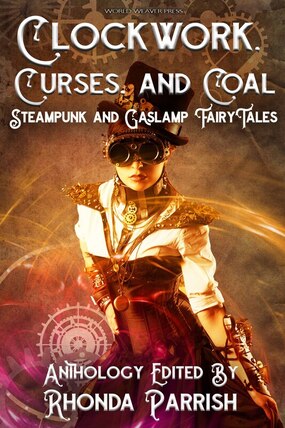 Guest Blog by Reese Hogan There’s one line from “The Balance of Memory” that sums up the seeds of its origins perfectly: “You can’t take me away from myself.” Though the story itself is one of a split personality and survival and looking for acceptance in toxic places, the roots of the theme were borne from a moment of severe anxiety that resulted in an experience I’d never had before and haven’t had since. Anxiety, at its heart, is incessant worry, though that doesn’t fully capture how debilitating it can be. I would more accurately call it “paranoia”. To someone who doesn’t know what severe anxiety is like, the best explanation I’ve come up with is, “Think of the worst-case scenario in any given situation. Anxiety is your mind convincing you that this outcome is not only likely, but practically inevitable.” This kind of anxiety tells you that you can and will lose everyone close to you, whether it happens in the near future or several years from now. And this kind of anxiety will hand you coping mechanisms, often in the form of “backup plans” for how to handle your life after these worst-case scenarios come to pass. What if I lose all my friends? What if I lose my career? What if my spouse leaves me, or my family stops talking to me, or my children pass away? What would I do if any of that happened? Or—perhaps more significantly—what would I do if all of that happened? These were the thoughts I found myself battling on a winter day in Colorado, after suffering a several week bout of severe anxiety that had left me convinced I needed a plan in case everything I loved was taken away. Serendipitously, I was listening to an Anberlin album, and a song called “Losing It All” came on as I mentally stripped, one thing after another, each thing I loved from my life to see what I’d be left with at the end. If everything was taken from me—my books, my music, my home, my family—what would I have to live for? There was only one thing, I realized, that could never be taken away from me: myself. At the end, there would be only one companion I could count on to always be there, only one person to turn to if everyone else was gone. It was in that moment that I realized how crucial it was to try to carve the self-hate out of my life. If you are stuck with one, and only one, person for the rest of your life, you do not want that person to be an abuser; you need them to be someone who loves and protects you, and will get you through whatever life throws at you. On my radio, Stephen Christian sang, “It’s not losing it all if we have each other. In the end, it’s all that matters.” This song to me, ever since, has been a credo on self-love and self-acceptance. When I wrote “The Balance of Memory”, my retelling of Hansel and Gretel, I wanted badly to try to recapture this feeling I’d had, of a personality splitting in order to protect oneself. In the process of studying Hansel and Gretel, I was struck by the fact that a pair of children who could be turned out of their house by their own parents would most likely have suffered other forms of abuse and/or neglect prior to this abandonment. So this is what I decided to explore in my story: a single child, subjected to experimentation in their father’s steampunk laboratory, who splits into two beings as a form of self-defense against having no one else to turn to. From there, the story filled out to address the complications this might introduce. How many thoughts would the two beings share, and how many would be separate? What about their memories? What kinds of ghosts existed in their lives, both metaphorically and literally, and how did these ghosts affect them differently? Would they still view themselves as living beings, as dead ones, or as something else entirely? The result of these musings was a girl with a steel jaw and a clever mind, a boy with goggles for eyes and a dark heart, a mutual hunger for the ghosts under their roof, and the careful balance of their souls around the secret that once made them whole. From a stranger’s hunt for immortality to the confines of a graveyard, “The Balance of Memory” is a deep dive into the coping methods of the mind…but it is also the journey of a fractured soul rebuilding, one cog and gear at a time. Reese Hogan is a nonbinary science fiction author from New Mexico. They have published three novels, and the latest, Shrouded Loyalties from Angry Robot, was a Best SFF of August 2019 pick by both Amazon and Barnes & Noble. When Reese first began a retelling of Hansel & Gretel, they were struck by the traumatic childhood the siblings must have faced even before they were abandoned in the woods. This led to an exploration of coping mechanisms, repression, and the need for companionship, and a few weeks later, “The Balance of Memory” was born. It is Reese’s first traditionally published short story. Read more at www.reesehogan.com or follow them on Twitter @ReeseHogan1.
 Guest Blog by Beth Cato There is something fantastical and delightful about flying on high in an airship. Landing, though, isn't embodied with quite as much romance, though it is certainly a necessity. After all, what goes up must come down, and it's best for that to not result in a hydrogen fireball as with the Hindenburg. My heroine Rapunzel has resolved this tricky dilemma in my story "A Future of Towers Made." She's figured out that rather than trying to land directly on the ground, an airship can moor to a mast--a structure that resembles a radio tower or an old oil derrick. This is how airships were docked in our own history, and a technology I've also used in my two steampunk novels series from Harper Voyager. In my story, though, the technological innovation isn't the resolution of the story. Rapunzel has her own landing to worry about--she's snared in an abusive marriage, and her husband has claimed all the credit for her mooring mast design. She wants to reclaim the rights to her own creation, and find the means to start her life anew, too. This is an unabashedly feminist fairy tale retelling. There is a lot of symbolism around towers, airships, and landings, but the real soul of the story is about finding your own means to take flight. It's about resilience, friendship, and hope, a story that may be inspired by history but bears a message that is current and necessary. Nebula-nominated Beth Cato is the author of the Clockwork Dagger duology and the Blood of Earth trilogy from Harper Voyager. She’s a Hanford, California native transplanted to the Arizona desert, where she lives with her husband, son, and requisite cats. Follow her at BethCato.com and on Twitter at @BethCato.
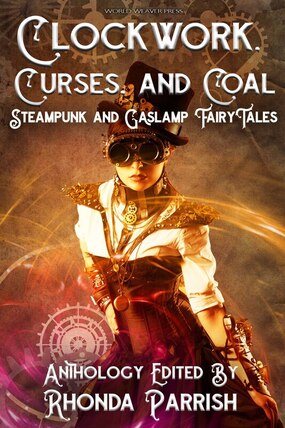 Guest Blog by Rhonda Parrish I first heard of steampunk twelve years ago at the World Fantasy Convention in Calgary. A friend and I were walking through the vendor room and there was a book called ‘Best of Steampunk’ or ‘Ultimate Steampunk Collection’ or something like that. When we asked the bookseller about what steampunk was she basically said, “Buy the book and find out.” Which was spectacularly unhelpful and gave me the impression she didn’t actually know the answer. I’m not sharing this story just to throw shade at some unnamed bookseller, but because I think that since then steampunk has become pretty well-known. Even if people haven’t read much of it, they know the aesthetic—gears and goggles, steam and airships. Wild west and Victorian settings. We all get it. Gaslamp fantasy might be a little less common, but it is pretty much exactly what it sounds like. It’s set in the same Victorian/Edwardian era as steampunk, but with a focus less on tech and more on the supernatural and magic. Often with an obvious gothic influence. That gothic influence shows itself in a lot of the stories in this collection. In fact, this is probably the darkest anthology I’ve ever put together for World Weaver Press. I think it’s partly a reflection of my personal tastes, partly because of the influence of the genre, but probably mostly a sign of the times. Submissions for this anthology closed about two weeks after my city started to lockdown as a response to COVID-19. That means while North American authors probably didn’t have the new coronavirus front of mind when they were writing their stories, I definitely had it front of mind when I was reading and selecting them. There’s no way that couldn’t have played a part in which stories I chose to include, even though it wasn’t a conscious part of my decision making. The good news, though, is that dark doesn’t mean depressing. While these stories do tackle some serious issues in fairy tale form (imperialism, equal rights, racism, exploitation), and they absolutely go to some dark places, many (most?) also find a spark of optimism or hope in the darkness. There aren’t a lot of traditional happily ever afters in these fairy tales, but there are a lot of satisfying endings and these days that is a thing to be treasured. Like a magpie, Rhonda Parrish is constantly distracted by shiny things. She’s the editor of many anthologies and author of plenty of books, stories and poems. She lives with her husband and three cats in Edmonton, Alberta, and she can often be found there playing Dungeons and Dragons, bingeing crime dramas or cheering on the Oilers.
Her website, updated regularly, is at http://www.rhondaparrish.com and her Patreon, updated even more regularly, is at https://www.patreon.com/RhondaParrish. Fairies threaten the world of artifice and technology, forcing the royal family to solve a riddle to stop their world from irrevocable change; a dishonest merchant uses automatons as vessels for his secrets and lies; a woman discovers the secret of three princesses whose shoes get scuffed while they sleep. These and so many other steampunk and gaslamp fairy tales await within the pages of Clockwork, Curses and Coal. Retellings of Hansel and Gretel, The Princess and the Pea, Pinocchio, The Twelve Dancing Princesses and more are all showcased alongside some original fairy tale-like stories. Featuring stories by Melissa Bobe, Adam Brekenridge, Beth Cato, MLD Curelas, Joseph Halden, Reese Hogan, Diana Hurlburt, Christina Johnson, Alethea Kontis, Lex T. Lindsay, Wendy Nikel, Brian Trent, Laura VanArendonk Baugh and Sarah Van Goethem. CLOCKWORK, CURSES, AND COAL: Steampunk and Gaslamp Fairy Tales is out now in ebook and paperback! "The technological flights of fancy are always intriguing, and fairy tale lovers will enjoy deducing the inspiration for each tale. Readers will not be disappointed." About the AnthologistLike a magpie, Rhonda Parrish is constantly distracted by shiny things. She’s the editor of many anthologies and author of plenty of books, stories and poems. She lives with her husband and three cats in Edmonton, Alberta, and she can often be found there playing Dungeons and Dragons, bingeing crime dramas or cheering on the Oilers. Her website, updated regularly, is at http://www.rhondaparrish.com and her Patreon, updated even more regularly, is at https://www.patreon.com/RhondaParrish. More Fairy Tale Anthologies From Rhonda Parrish |
World Weaver PressPublishing fantasy, paranormal, and science fiction. Archives
February 2024
|
- Home
-
Books
-
All Books
>
- Beyond the Glass Slipper
- Bite Somebody
- Bite Somebody Else
- Black Pearl Dreaming
- Cassandra Complex
- Causality Loop
- Clockwork, Curses, and Coal
- Continuum
- Corvidae
- Cursed: Wickedly Fun Stories
- Dream Eater
- Equus
- Fae
- Falling of the Moon
- Far Orbit
- Far Orbit Apogee
- Fractured Days
- Frozen Fairy Tales
- Glass and Gardens: Solarpunk Summers
- Glass and Gardens: Solarpunk Winters
- Grandmother Paradox
- Grimm, Grit, and Gasoline
- Haunted Housewives
- Heir to the Lamp
- He Sees You When He's Creepin': Tales of Krampus
- Into the Moonless Night
- Jack Jetstark's Intergalactic Freakshow
- King of Ash and Bones (ebook)
- Krampusnacht
- Last Dream of Her Mortal Soul
- Meddlers of Moonshine
- Mothers of Enchantment
- Mrs Claus
- Multispecies Cities
- Murder in the Generative Kitchen
- Recognize Fascism
- Scarecrow
- Sirens
- Shards of History
- Shattered Fates
- Skull and Pestle
- Solarpunk (Translation)
- Solarpunk Creatures
- Solomon's Bell
- SonofaWitch!
- Speculative Story Bites
- Trenchcoats, Towers, and Trolls
- Weredog Whisperer
- Wolves and Witches
- Anthologies and Collections
- Novels
- Novellas
- Fairy Tale
- Fantasy
- Romance
- Science Fiction
- Urban/Contemporary Fantasy
- Young Adult SFF
-
All Books
>
- Blog
- About
- Contact
- Press / Publicity
- Newsletter Signup
- Privacy Policy
- Store


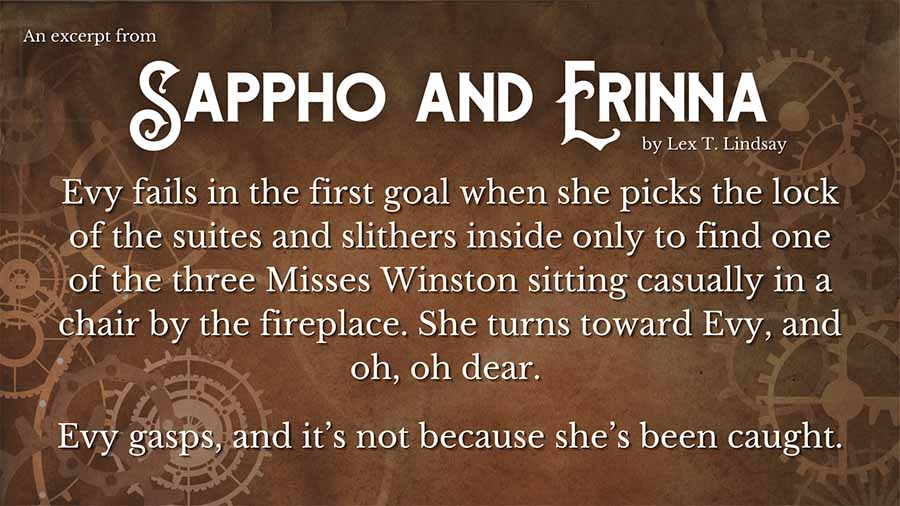

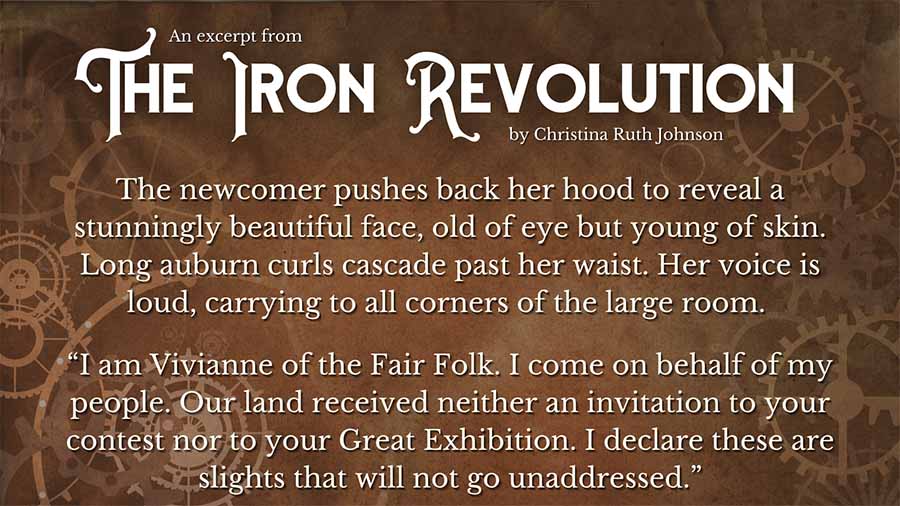

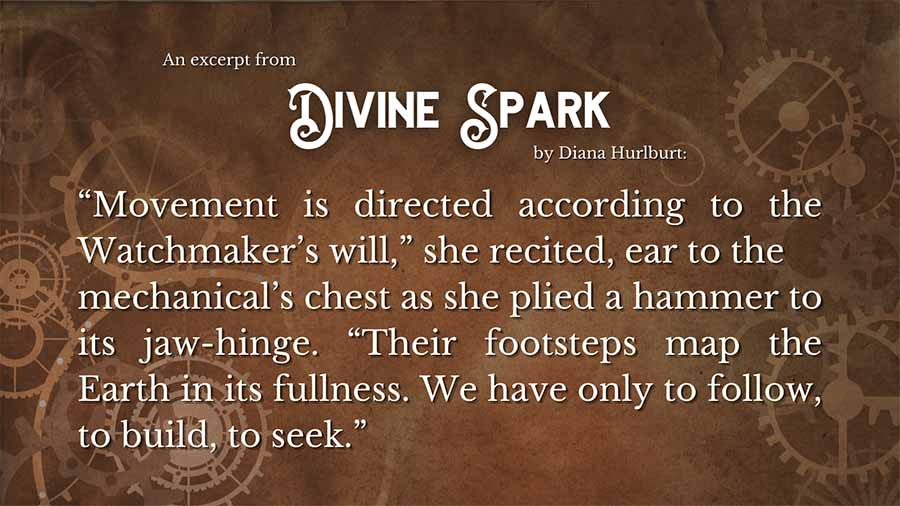



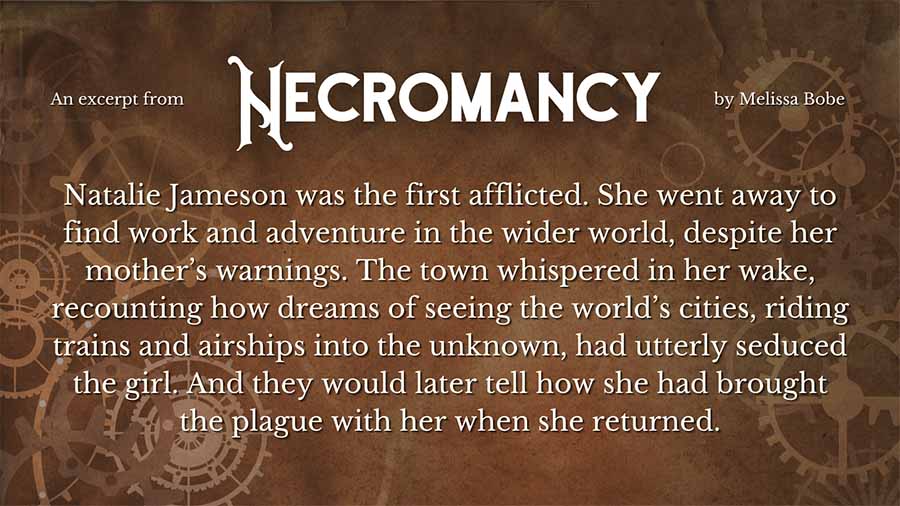
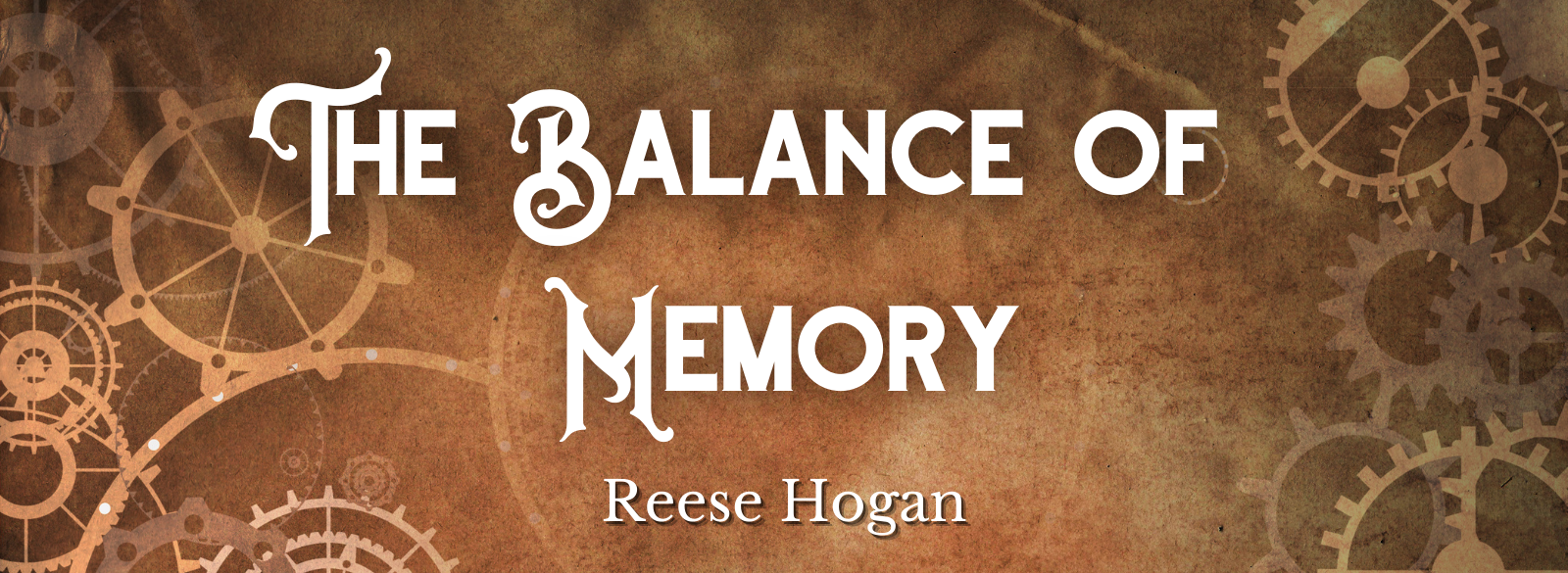



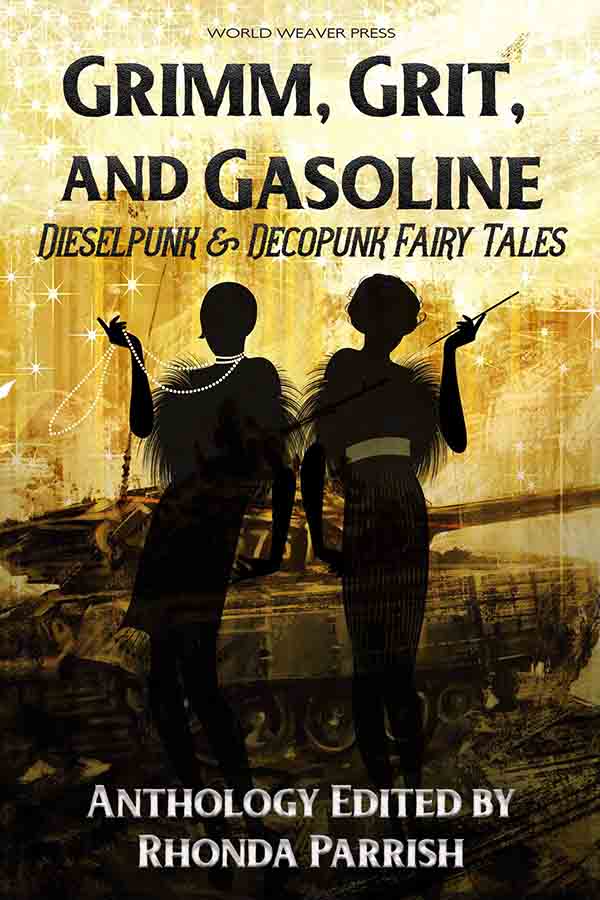

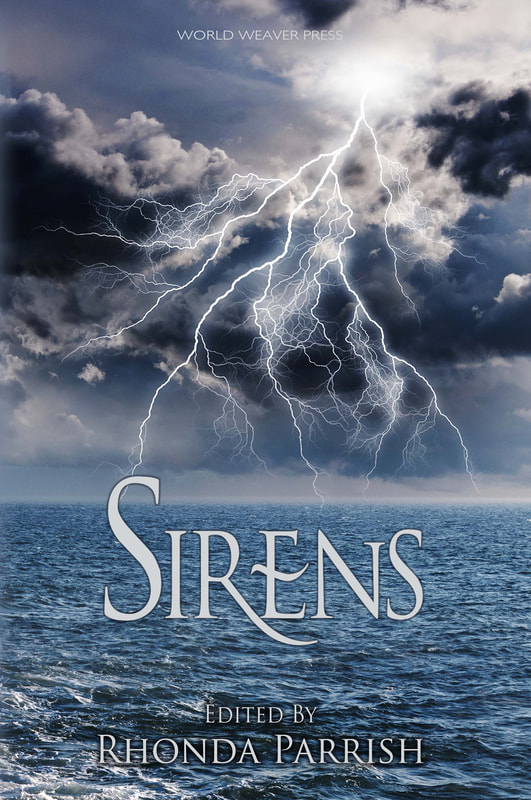
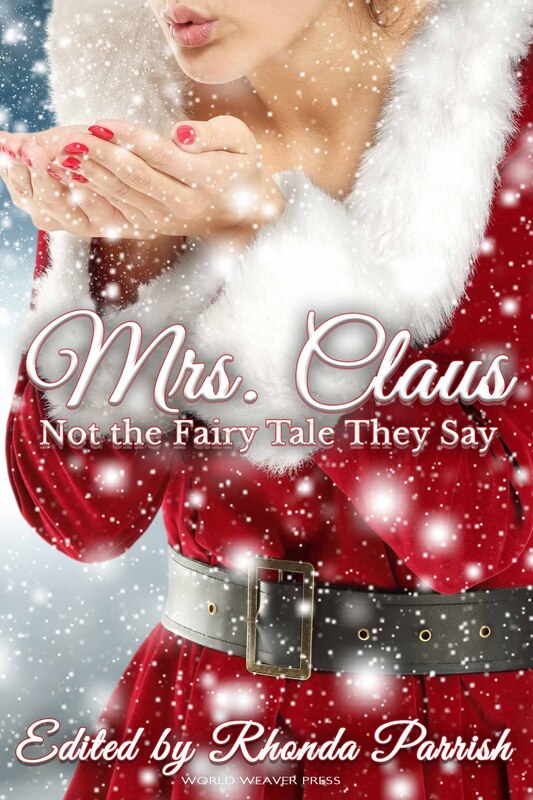
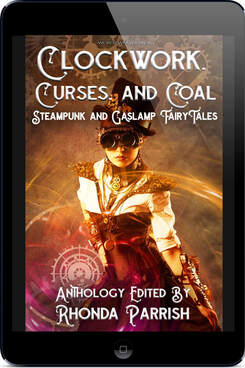

 RSS Feed
RSS Feed